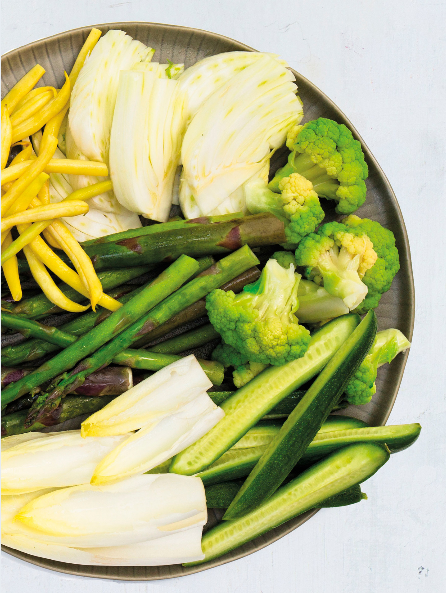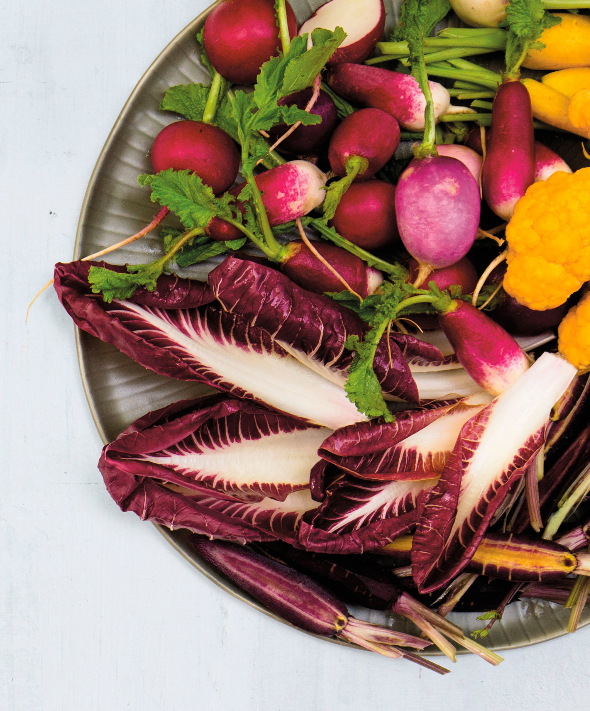The New Crudites
 The New Crudites
The New Crudites
The More Color the Better: In late summer, there’s a technicolor spread of in-season produce, from tomatoes and bell peppers to radishes, cucumbers and baby beets. For visuals alone, it’s the best time of the year for crudités.
Don’t Forget About Texture: In case you’ve gotten carried away with color: vary the texture and taste of the assortment, from crunchy carrots and snap peas to lush tomatoes.
Crowd the Platter: Like a good cheese plate, a crudites platter looks best and most appealing when it is full.
Even Fresh Produce Needs Help: Drizzle a little good-quality olive oil on the produce and season with flaky salt, advises Mansell. Dips alongside, a variety of one or two, are also advisable, according to the chef, even if the best produce won’t need them.
Dip Rules: Keep it thick and creamy. Thin sauces like chimichurri or salsas are too loose and drippy, and won’t cling to your veggie sticks. Make it smooth rather than chunky because, again, a chunky sauce won’t cling as well to the slick vegetables and will make for an awkward dipping experience. Feel free to go for bold flavors ~ the veggies can take it!

Asparagus (blanch)
Beets (golden, candy cane)
Belgian Endive
Bell Peppers
Broccoli (or broccolini), Cauliflower (try colored varieties), Romanesco
Carrots – Real baby carrots pulled from ground, or rainbow colors
Celery
Cucumber
Fennel
Green Beans, Wax Beans, Romano Beans (serve raw or blanched)
Jicama
Potatoes (halve roasted or boiled fingerlings)
Radishes (look for interesting ones, like French breakfast radish or watermelon radish)
Scallions
Snow Peas / Sugar Snap Peas (blanch. String if necessary)
Summer Squash & Zucchini (Add some Pattypan)
Sunchokes
Tomato (small sizes, like cherry or pear)
Treviso
Turnips
